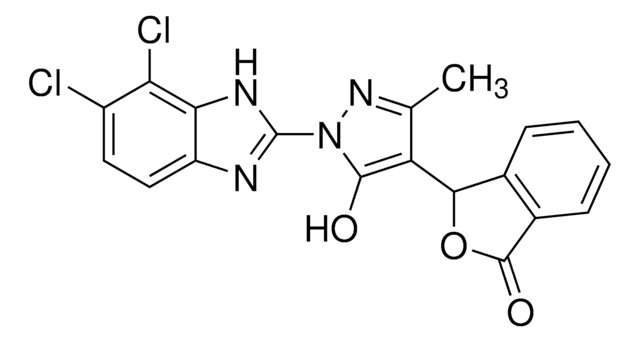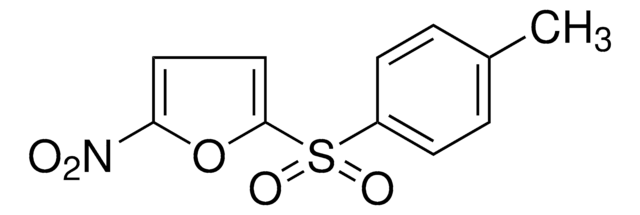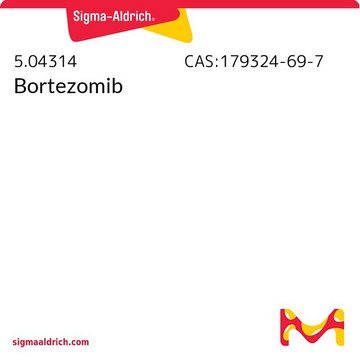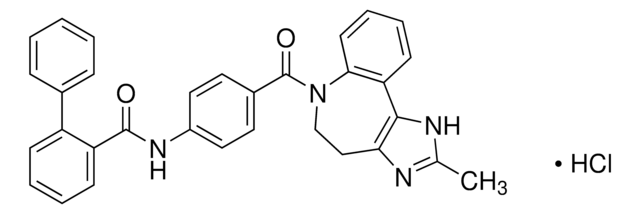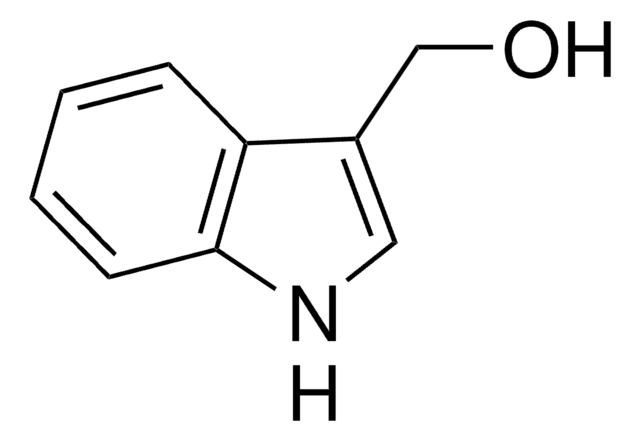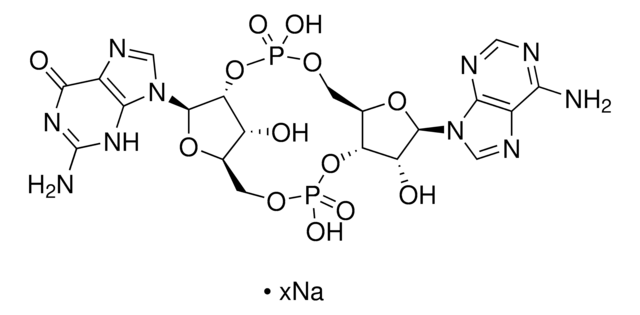Kluczowe dokumenty
SML2437
H-151
≥98% (HPLC)
Synonim(y):
1-(4-Ethylphenyl)-3-(1H-indol-3-yl) urea
About This Item
Polecane produkty
Próba
≥98% (HPLC)
Formularz
powder
kolor
white to beige
rozpuszczalność
DMSO: 2 mg/mL, clear
temp. przechowywania
2-8°C
ciąg SMILES
[nH]1c2c(c(c1)NC(=O)Nc3ccc(cc3)CC)cccc2
InChI
1S/C17H17N3O/c1-2-12-7-9-13(10-8-12)19-17(21)20-16-11-18-15-6-4-3-5-14(15)16/h3-11,18H,2H2,1H3,(H2,19,20,21)
Klucz InChI
UJZDIKVQFMCLBE-UHFFFAOYSA-N
Działania biochem./fizjol.
Kod klasy składowania
11 - Combustible Solids
Klasa zagrożenia wodnego (WGK)
WGK 3
Temperatura zapłonu (°F)
Not applicable
Temperatura zapłonu (°C)
Not applicable
Wybierz jedną z najnowszych wersji:
Certyfikaty analizy (CoA)
It looks like we've run into a problem, but you can still download Certificates of Analysis from our Dokumenty section.
Proszę o kontakt, jeśli potrzebna jest pomoc Obsługa Klienta
Masz już ten produkt?
Dokumenty związane z niedawno zakupionymi produktami zostały zamieszczone w Bibliotece dokumentów.
Nasz zespół naukowców ma doświadczenie we wszystkich obszarach badań, w tym w naukach przyrodniczych, materiałoznawstwie, syntezie chemicznej, chromatografii, analityce i wielu innych dziedzinach.
Skontaktuj się z zespołem ds. pomocy technicznej